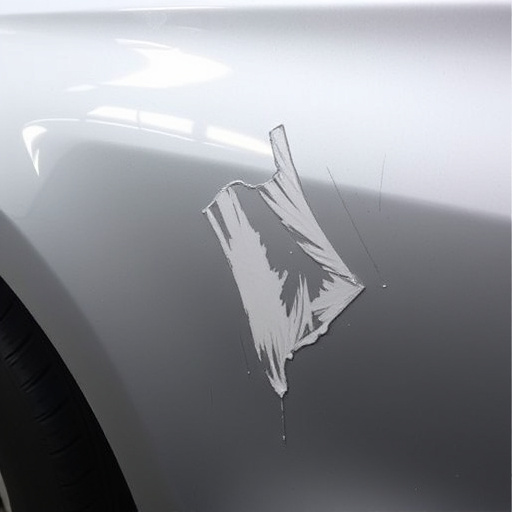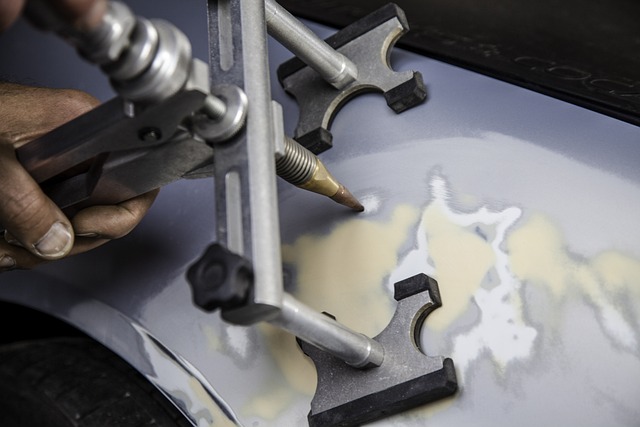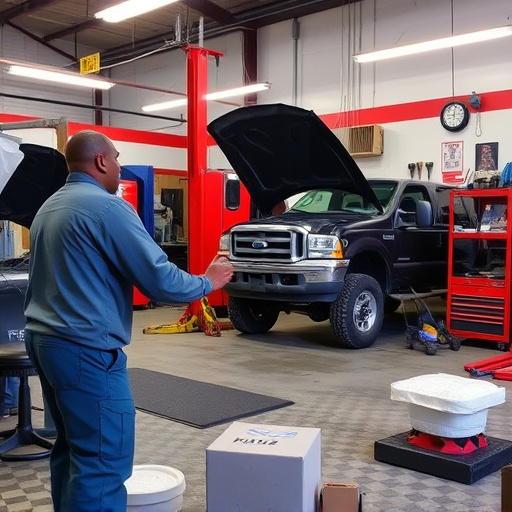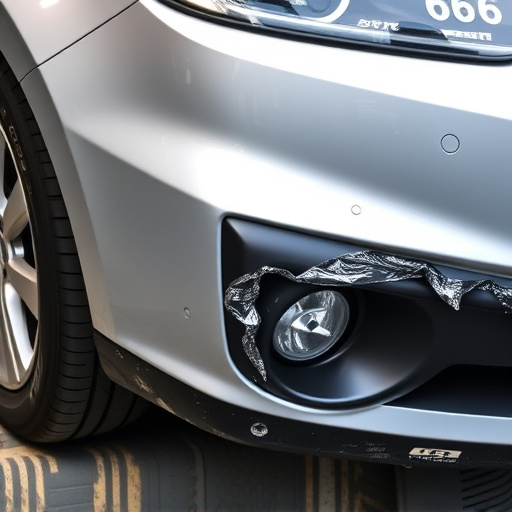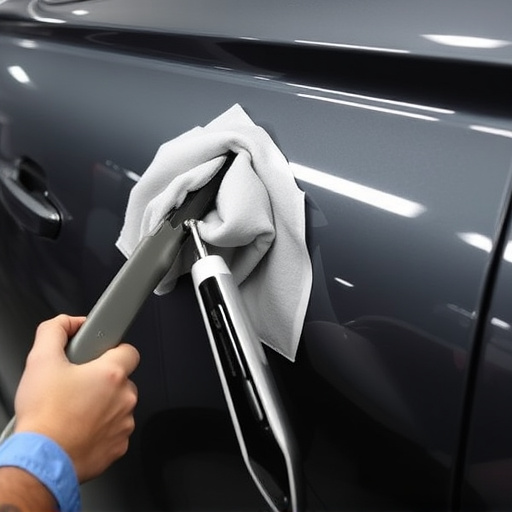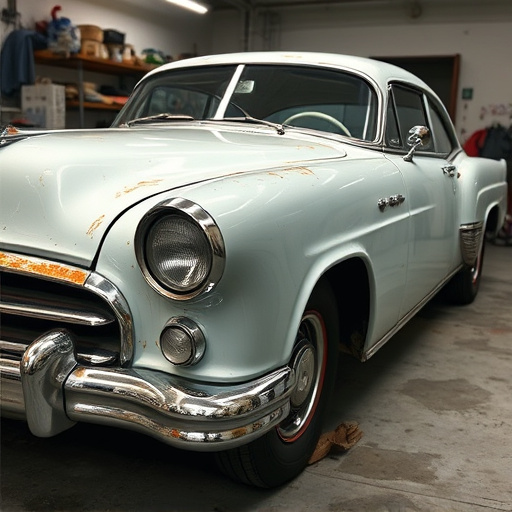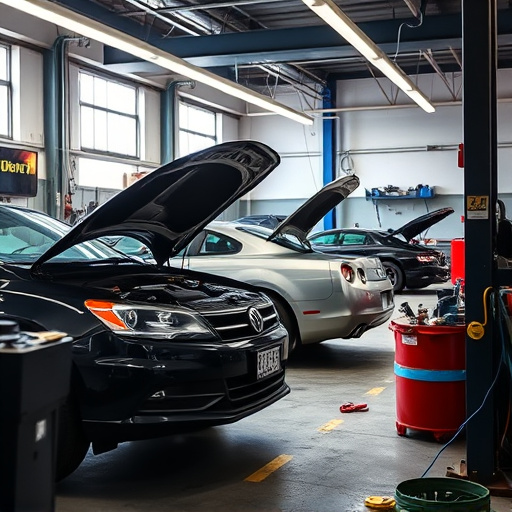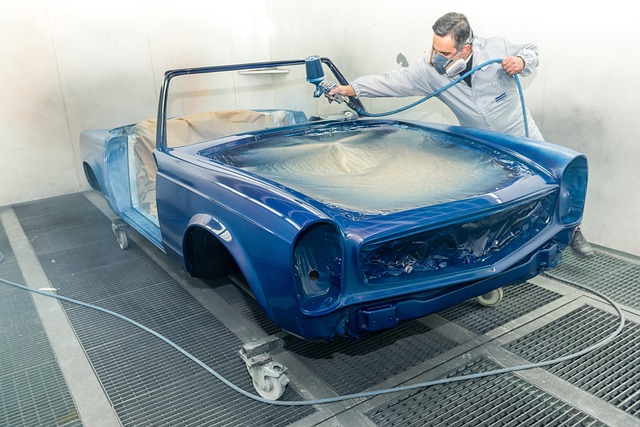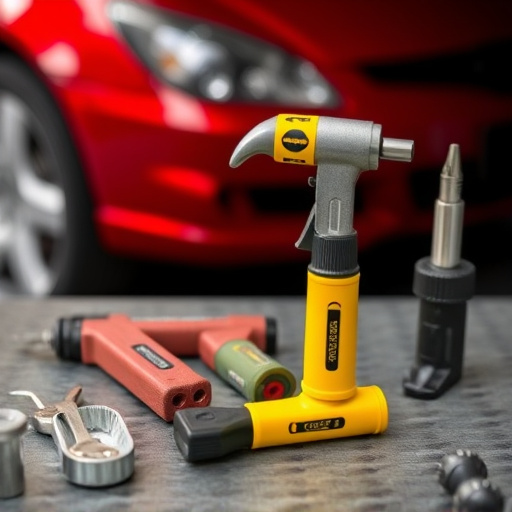Before repairing paint chips on your car, assess damage by considering size, depth, and location. This guides selection of repair techniques and necessary supplies, ranging from basic tools like sandpaper and filler to advanced equipment for severe cases. Minor chips can be treated with touch-up paint and light sanding, while larger or deeper chips may require more intensive methods such as sandblasting or complete repainting. Essential tools include a high-quality paint chip repair kit, fine-grit sandpaper, degreaser, small putty knife, cotton swab, gloves, clean rags, and a mask to protect against fumes.
Mastering paint chip repair is an essential skill for any homeowner or DIY enthusiast. This guide offers 10 valuable tips to tackle this common yet challenging task effectively. From assessing damage and gathering the right supplies to advanced techniques for achieving a professional finish, we’ve got you covered. Learn how to identify paint chips, prepare surfaces, apply new paint, and match colors seamlessly. With these steps, you’ll be able to restore your walls to their original beauty, ensuring a flawless repair every time.
- Assessing the Damage and Gathering Supplies
- – Identifying paint chips and understanding severity
- – List of essential tools and materials for repair
Assessing the Damage and Gathering Supplies

When tackling paint chip repair, the first step is a meticulous assessment of the damage. Examine the extent and type of chips or cracks in your car’s paintwork—from small nicks to larger areas that may require auto body work. Consider factors like location, depth, and overall impact on aesthetics. This initial evaluation will guide your choice of repair techniques and supplies needed for a successful paint chip repair.
Gathering the right supplies is paramount. Depending on the severity, you might need simple tools like sandpaper, filler, primer, and paint that matches your car’s original color. For more extensive car restoration, professional tools such as an air compressor, heat gun, or even a trip to an auto repair shop for expert advice could be in order. Remember, proper preparation ensures the best results in car paint repair.
– Identifying paint chips and understanding severity

Identifying paint chips is the first step in any paint chip repair process. These small fragments of peeling or missing paint can range from barely noticeable to significant areas of exposure, depending on their severity and location. When assessing the damage, consider factors like size, depth, and extent of the chip. A minor chip might be a few millimeters across and only slightly depresses the surface, while a more severe chip could expose metal or another layer beneath the paint.
Understanding the severity is crucial as it dictates the repair approach. Smaller, shallow chips can often be addressed with touch-up paint, filler, or a light sanding to smooth the area. In contrast, larger or deeper chips might require more intensive methods like sandblasting, plastic welding, or even complete repainting of the affected panel, similar to services provided at a collision center for vehicle collision repair and tire services.
– List of essential tools and materials for repair

To successfully tackle paint chip repair, there are several essential tools and materials you’ll need. Start with a good quality paint chip repair kit, which typically includes filler, primer, and topcoat. These kits come in various colors to match your car’s paint, ensuring a seamless finish. Don’t forget to grab some fine-grit sandpaper for smoothing out the repaired area, as well as a degreaser or cleaner to prepare the surface.
For precise application, consider investing in tools like a small putty knife or spatula, a cotton swab or brush, and plastic or rubber gloves. Clean rags and a mask are also recommended to protect against fumes during the repair process. With these essentials at hand, you’ll be well-prepared to handle paint chip repairs, whether it’s a minor dent or a more significant collision repair, turning to auto body services for help when needed.
Mastering paint chip repair is a valuable skill that can restore your home’s aesthetic appeal. By following these 10 tips, from assessing damage to gathering the right supplies, you can effectively fix those pesky paint chips and extend the life of your walls. With a bit of patience and the right tools, achieving professional-looking results is well within reach, ensuring your space remains vibrant and free from unsightly defects.
